Most Recommended Dishes for the 24 Solar Terms
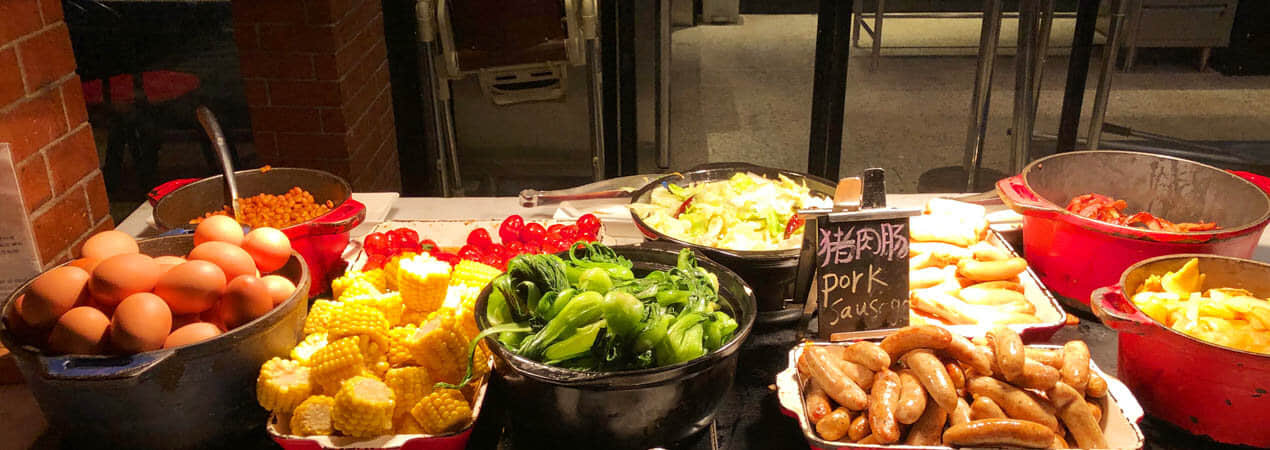
Having been an agricultural country for more than 3500 years, China attaches great importance to the calendar. To guide agricultural production, ancient Chinese people divided the year into 24 segments based on the sun's position in the zodiac. Each segment is called a solar term, which reflects the changes of the seasons, climate and phenology.
The influence of the ancient way of dividing time have in fact gone beyond farming into the daily lives of the Chinese people, even into their mindset. In this article, we’ll focus on the food Chinese people eat during each solar term. We believe fruits and vegetables are at their peak of freshness when they are in season. Eating seasonally is what the solar terms tell us to do.
In spring
Lichun (Beginning of Spring)
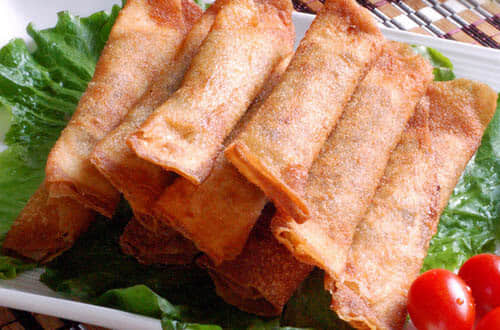
Spring Rolls
This is the 1st solar term. The weather is getting warmer so there are a lot of vegetables available. Fresh, seasonal vegetables are the main ingredients for dishes at this period. The most popular dish is “Spring Rolls”, a thin sheet of dough, rolled, stuffed and fried. The filling usually consists of carrot, cucumber, chives, green bean sprouts, etc. Another dish called Chunbings, or spring crepes, is a similar version of Spring Rolls, and the only difference is they are not fried, but eaten directly after all the fillings are rolled.
Yushui (Rain Water)
As its name implies, this term bodes for an increase in rainfall. There is an ancient Chinese saying, “Rain during the spring time is as precious as oil,” signifying the importance of rain to the plants and farming. In Sichuan in southwestern China, local people will stew pig hocks with bean and seaweed in an earthenware cooking pot. Many people in northern China will cook pork and shepherd’s purse (also called Capsella bursa-pastoris) dumplings. Firstly, they’ll blanch the shepherd’s purse in boiling water for one minute and strain it, then mince the shepherd’s purse and squeeze as much water as they can out of it. Finally they mix it with pork, Chinese chives, ginger and salt to make it the filling of the dumplings.
Jingzhe (Awakening of Insects)
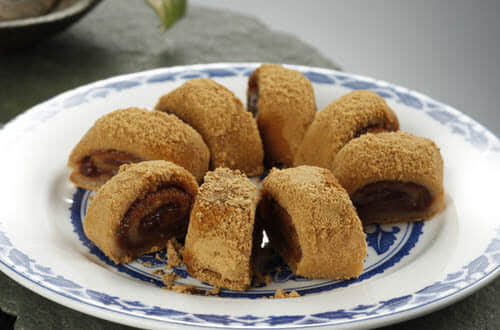
Ludagun or "Rolling Donkey"
Chinese people believe that the spring thunderstorms will startle hibernating insects during Jingzhe, hence the arrival of Jingzhe marks an increase in insect activity. To ward off insects, people in Beijing will eat Ludagun or “rolling donkey” today. It is a sticky rice cake with sweet red bean filling and coated with sugar-like soybean flour. Another popular dish is stir-fried egg with Chinese chives. Chinese chives are seen as warming food in nature, so Chinese people believe that it will help you to nourish your ‘yang’ energy by eating it in spring.
Chunfen (Spring Equinox)
Chunfen, which literally means Spring Equinox or Vernal Equinox, falls on the day when the sun is exactly at the celestial latitude of zero degrees. The Spring Equinox signals the equal length of the day and night time. On this day, Chinese people in the countryside will pick amaranth in the wild, and then they just blanch it in boiling water and serve it with salt and soy sauce. Another seasonal delicacy is bamboo shoots dishes, like Stir-fried eggs with shredded bamboo shoots and fried bamboo shoots with smoked bacon.
Qingming (Clear and Bright)
Qingming typically symbolizes spring time. It denotes that people should go outside and enjoy the greenery and look after the graves of those who have passed away. It is also called Tomb Sweeping Day.
The seasonal food is Qingtuan, a sticky rice dyed emerald-green by Chinese mugwort plants (or Smooth brome), this dessert is filled with a delicious red bean paste. The Qingming Festival grew out of an ancient Chinese festival called Hanshi Festival (寒食节), literally the Cold Food Festival. All the food was to be consumed cold. Therefore the Festival was thus named. To prepare for the festival, sanzi (馓子) or hanju (寒具) will be cooked; these are crispy, deep fried golden strands of dough, made of rice or wheat flour, eggs, sesame, and salt. Sometimes it is also referred to as ‘shiba pan’ (十八盘, 18 twists).
Guyu (Grain Rain)
When Guyu comes, the warm weather and plenty of rainfall make it the best time to plant crops like rice and cotton. The most popular dish is stir-fried egg with Chinese toon buds (Chun).
Dong people in Guizhou province will cook dyed sticky rice on the day of Guyu, and they use leaves of Vaccinium bracteatum as a black pigment to dye the rice. They'll smash the leaves and filter it, then the resulting extract is added to uncooked sticky rice. The mixture is left overnight and then cooked.
Chinese people believe that the tea leaves picked on the day of Guyu will brighten the eyes and ward off evil spirits, making tea drinking on this day a seasonal tradition.
In summer
Lixia (Beginning of Summer)
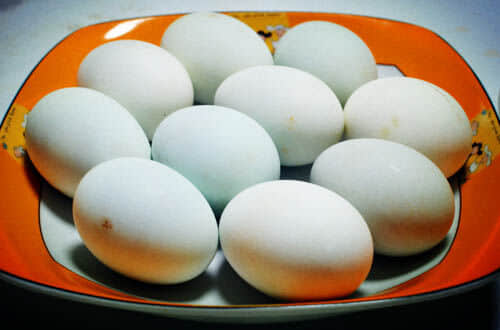
Salted Duck Egg
Lixia usually falls on 5th or 6th of May, as this marks the beginning of summer. All vegetation is in luxuriant growth. It’s a crucial time for the harvest of wheat, canola seed and other crops. The most popular dish is salted duck egg; people believe it will equip you with the energy you need to do the tiring harvest work.
Another seasonal food is a little red bean and ‘Job’s tears’ (commonly known as Chinese pearl barley or coix) congee. It helps to clear away heat, regulate the spleen and soothe inflammation. It is very easy to cook it. Firstly they'll soak the ingredients for two hours and then rinse them clean, then put all ingredients into a pot with 5 to 6 cups of water. They bring it to the boil and lower the heat to cook until the beans are soft (about 45 minutes). Finally they add sugar (crystal sugar is recommended) to serve if desired.
Xiaoman (Lesser Fullness of grain)
Xiaoman means that the seeds from the grain are becoming full but are not ripe. It is a time of humidity and heat. To keep healthy, Chinese people will collect sow thistle in the wild and cook it as a dish. According to Traditional Chinese Medicine, it will help to protect your heart if you eat bitter food in summer. Bitter melon (gourd) is the seasonal food for summer. You can stir-fry bitter melon with egg or pork, and in the Guilin area, the most popular dish is called Pork-stuffed bitter melon soup. Cherry is the first type of fruit that is ripe as summer arrives.
Mangzhong (Grain in Ear)
Literally, Mangzhong means “wheat with awn should be harvested soon, and rice seeds with awn can be sown”. During the Mangzhong period, the weather is hot and humid, and it will make people feel sleepy and have a poor appetite. To give us a good appetite, Mother Nature provides us with green plums. Sour in taste, plums were added into foods and drinks such as sour plum drink, plum sauce, and plum wine. It is the best time to cook cucumber dishes.
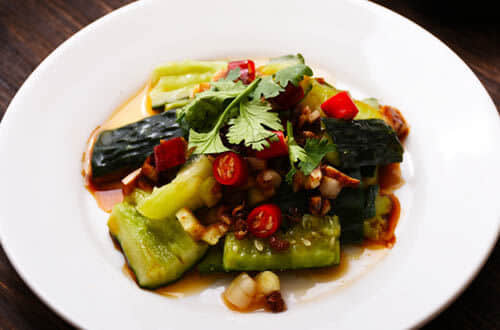
Smashed Cucumber Salad
Smashed cucumber salad or Pai Huang Gua (拍黄瓜) is the favorite dish for many Chinese people on a hot summer’s day. You just need three simple steps to prepare it: Firstly buy two fresh cucumbers, remove the two ends (and tough skins if there are any). Cut the cucumber in half lengthwise. Then smash the cucumber with a wide knife (some Chinese people just use the palm of their hand!). Then cut the cucumber into 3-4cm length sections. Finally add salt, sugar, vinegar, soy sauce, and sesame oil. We also add coriander and chili powder in China.
Xiazhi (Summer Solstice)
This day marks the start of meteorological summer but it means more than that for Chinese people. According to traditional Chinese philosophy, it marks the turning point in the balance of yin and yang energy on earth. The yang energy reaches the extreme on this day and the yin energy becomes stronger from Summer Solstice onward. Chinese people will have noodles today. You can find different kinds of noodles all over China: Zha Jiang Mian (Fried Sauce Noodles) in Beijing, Liang Mian (Cold noodles) in Xi’an and Jisi Liang Mian (Cold noodles with chicken meat) in Sichuan.
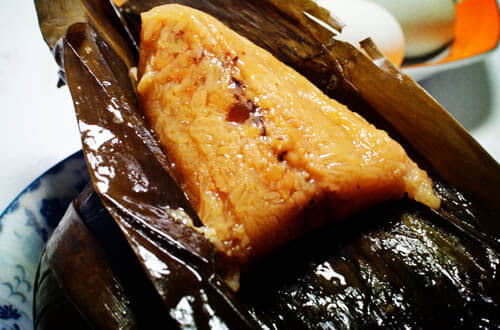
Zongzi(粽子)
Many people will eat Zongzi (粽子) or Chinese sticky rice dumplings. Zongzi is sticky rice with sweet or savory fillings wrapped in leaves of ‘cast iron’ plants or reed. After being cooked in water, all the ingredients stick together and stay in a particular shape when unwrapped. There are many varieties all over China. In Chongqing, we just wrap sticky rice, no fillings; we’ll dip it into sugar before eating. While in Guilin, the fillings include a large variety of food like red bean, mushroom, mung bean, date, pork or even shrimp.
Xiaoshu (Minor Heat)
This is a prelude to the "dog days" – the hottest days of the season. To dispel heat and keep healthy, Chinese people will cook lotus root dishes and mung bean congee which are helpful in relieving inflammation and internal heat.
We call the hottest days Sanfutian (三伏天), in Shanghai and surrounding areas, and local people have a long tradition of eating Fuyang (伏羊) or drinking mutton soup during Sanfutian. According to Traditional Chinese medicine, drinking hot mutton soup can disperse the cold in your body and nourish your health, hence the saying “A bowl of mutton soup during Sanfu days keeps the doctor away “.
Dashu (Greater Heat)
Greater Heat symbolizes the second phase of the Sanfu days – the hottest period of the year. Extreme heat waves can pose serious health risks including dehydration, skin sensitivities, fever and heat stroke. In order to reduce the risk, we’ll have grass jelly served with milk or alongside fresh fruit.
Grass jelly is a black or green jelly-like substance that has a mild and slightly bitter taste. It can relieve a burned tongue and heal a sore throat. Black grass jelly is made from the Mesona palustris (Black Cincau) plant, while the Cyclea barbata Miers plant is used to make green grass jelly. To make both varieties of grass jelly, the plants' leaves are boiled in water then cooled down and a gel-like substance is formed.
In autumn
Liqiu (Beginning of Autumn)
Liqiu is the first solar term of autumn, around which the summer heat still lingers, and the Chinese words “Qiulaohu” (Autumnal Tiger) are used to describe the hot weather of the period after Liqiu. In Beijing, people follow the custom of Tieqiubiao (贴秋膘) or fatten up in autumn: eating meat on the day of Liqiu in order to replenish nutrition lost in summer and prepare for the cold weather. The seasonal vegetable is eggplant, and the most popular dishes are: Eggplant in Garlic Sauce, Deep fried Chinese Pork Stuffed Eggplant and Grilled Eggplant.
In autumn as the air dries, the moisture in the human body also decreases; so replenishing fluids is especially important, both by drinking fluids and eating foods that promote moisture in the body. There is popular dish called white fungus (Tremella fuciformis), lotus seed, and lily bulb soup, because this soup will reduce dryness and moisturize your body, inside and out.
Chushu (End of Heat)
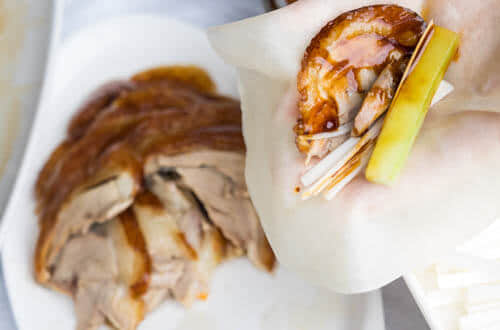
Peking Roasted Duck
The summer heat is finally starting to fade away. The sun is no longer scorching and the cooling breeze starts to make an occasional appearance. Eating duck is a traditional custom of “Chushu” in Beijing and many parts of China. With the traditional dish for Chushu being duck, most famous dish is Peking Roasted Duck in Beijing.
Another seasonal dish is sweet and sour lotus root. It can help to improve digestion, and boost the immune system, balancing mood and relieving depression.
Bailu (White Dew)
Around the day of Bailu, the temperature declines gradually. It is still warm in the daytime but cold at night, causing the formation of dew. The climate turns dry, which could trigger coughing in certain people. To keep healthy, people eat longan and pears, which are mild and moisturizing according to Traditional Chinese Medicine theory. The chrysanthemum is also used as a cooking ingredient during this period. The most popular dish is congee cooked with chrysanthemum and goji berries.
Qiufen (Autumnal Equinox)
Most regions in China enjoy good cool weather with the arrival of the Autumnal Equinox. Some of the rivers and lakes even begin to dry up as rain water vanishes.
With Osmanthus and chrysanthemum flowers blooming, and hairy crabs (Chinese mitten crabs) entering their best days, the best place to have hairy crabs is in Shanghai as it is close to Yangcheng Lake which produces the best hairy crabs. Hairy crab is famous for the sweetness of its meat and its golden roe. It is very easy to cook it, as we just steam them and serve it with sauce made from vinegar, ginger, and sugar. It is also customary to eat hairy crabs with Huangjiu (黄酒), which translates literally to “yellow wine”, a local version of brandy.
Hanlu (Cold Dew)
Cold Dew, known as "Hanlu" in Chinese, signifies the official end of autumn, when the dawn awakens with a wet land, and dewdrops glisten over leaves and flowers. It's much colder than the White Dew.
Chinese people have a very long history of consuming black sesame for its health-promoting and anti-aging benefits. The sesame has been harvested, and snacks like sesame crispy cakes, sesame and mung bean cakes, and pancakes are especially popular in this season.
Making Chrysanthemum wine with sticky rice, distiller’s yeast, and chrysanthemum flowers and leaves around Hanlu is a tradition in many areas of southern China. The wine is sealed for a year before drinking.
Shuangjiang (First Frost)
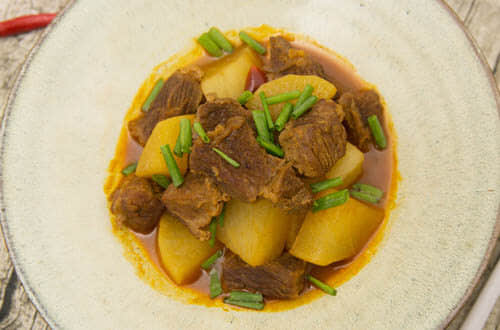
Beef Brisket Stew with Radish
After Shuangjiang, the weather gets even colder and sometimes there is a heavy frost: the days are more wintry. On the days of Shuangjiang, in order to fight against the cold, Chinese people often eat persimmons. These are said to keep the body warm and the skin, especially the lips, hydrated.
Chinese radish is in season, and it is the most popular vegetable during this period. Chinese people believe that it can bring multiple health benefits, such as relieving a cough, reducing cholesterol and stabilizing blood pressure. In the south of China, many families will cook Beef brisket stew with radish (萝卜炖牛腩) on the day of Shuangjiang, as they believe this dish will help them to fight against the cold weather .
In winter
Lidong (Beginning of Winter)
It is not yet really cold, but winter is definitely on the horizon in China. Most of the crops have already been harvested, dried and put into storage, while the winter wheat has been readied for the coming winter. It is also a time to reward the whole family for a year's hard work. In rural areas, people usually prepare a big dinner with produce from their own fields to celebrate the harvest. Dumplings are the most popular dish for Lidong.
Xiaoxue (minor Snow)
This period welcomes the first light snowfall of winter, as temperatures in most parts of China drop below zero at night.
During Xiaoxue, people begin to store away supplies for the coming winter, with many eating beef and mutton to help stay warm. The most seasonal dish is Mutton Soup, which is like lamb hotpot, and is in huge demand during this time of the year. Traditional Chinese Medicine holds that mutton is warming in nature, which makes it a perfect food for the winter.
Daxue (Major Snow)
In the north of China, most parts are now covered in snow. Tree branches may get broken and roads blocked by heavy snow. While in the south, only some parts of the terrain turn white with snowflakes flying in the air.
Salted potherb mustard hits the market around Major Snow. Many families cook and serve the hot soup of salted potherb mustard for dinner.
Another popular dish is sweet potato congee, which will keep you warm. Sweet potatoes are a great source of fiber, vitamins, and minerals. It is also good for gut health.
Dongzhi (Winter Solstice)
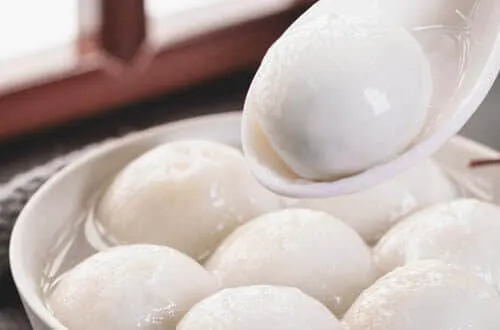
Tang Yuan (汤圆)
As the saying goes, “The Winter Solstice is as important as the Chinese New Year”. Chinese people attach great importance to the winter solstice. In China, there’s a long tradition of offering sacrifices to people’s ancestors on this day. In ancient China, people divided the wintry days after the Winter Solstice into nine sessions with each one covering nine days, called Shujiu.
The most popular food on this day is dumplings in the north of China. In the south of China, people will eat Tang Yuan (汤圆), which are sweet sticky rice balls with sesame fillings.
Learn more about Do You Know the Differences between Yuanxiao and Tangyuan?
Xiaohan (Minor Cold)
During Minor Cold, most areas in China have entered the bitterly cold stage of winter. The ground and rivers are frozen. The cold air from the north moves southward continuously.
In the south of China’s Guangdong Province, residents traditionally eat sticky rice. The rice is usually mixed with sausage, meat and peanuts to add flavor and keep it from being too sticky.
In the city of Nanjing, people cook rice with vegetables. By mixing green vegetables, sausages and rashers with rice, it smells and tastes no less appetizing than the Laba congee.
Dahan (Major Cold)
During Dahan, the Siberian cold wave frequently invades southwards, and in most parts of China it is the coldest period of the year.
On this day, we’ll eat sticky rice with beans and meat. The sticky rice has warming effects and tastes mildly sweet and can help the spleen, stomach and digestion. Chinese people believe that it will be good to eat the roots of plants in winter. The Chinese yam root is in season. It has been one of the most important and commonly used food remedies in Traditional Chinese Medicine for generations. Chinese yam with chicken soup and Chinese yam with mutton soup are also popular dishes during this period.
OR
Are you eager to begin your Chinese cultural journey?
Drop us a line and we will promptly connect you with our leading China expert!
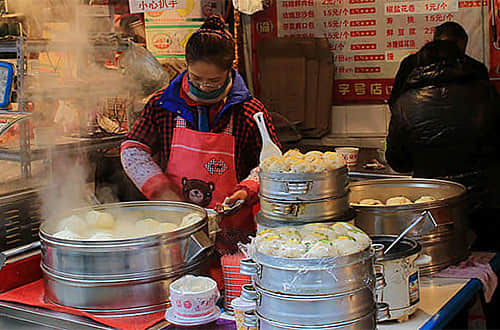 Foods and Snacks
Foods and Snacks 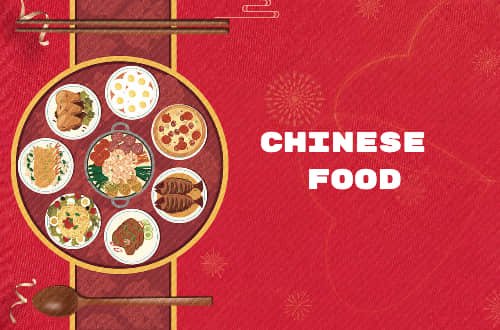 Chinese Food and Related Customs
Chinese Food and Related Customs 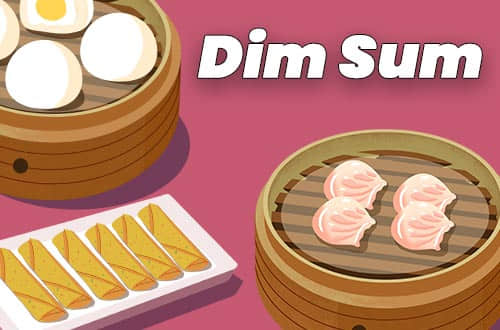 Dim Sum
Dim Sum 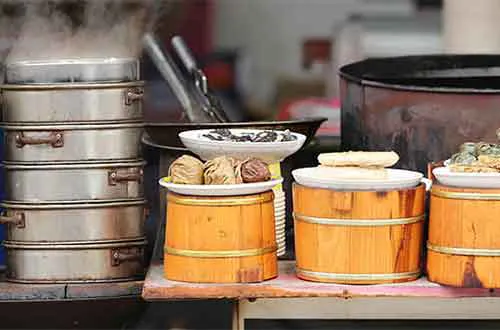 Chinese Cooking Methods
Chinese Cooking Methods